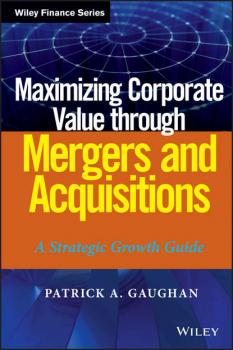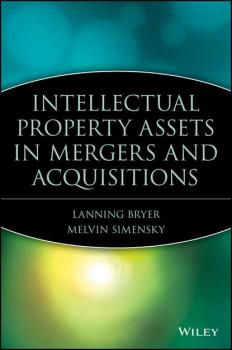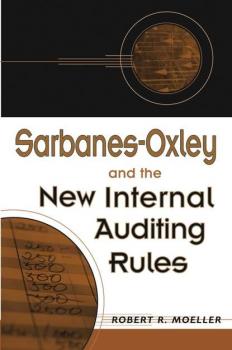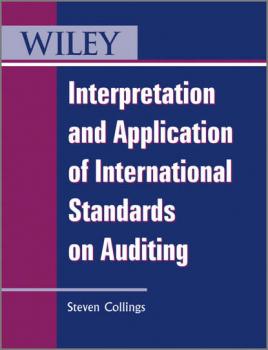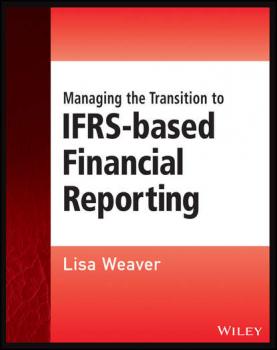ТОП просматриваемых книг сайта:
Бухучет, налогообложение, аудит
Различные книги в жанре Бухучет, налогообложение, аудит, доступные для чтения и скачиванияАннотация
The tools to manage ongoing Sarbanes-Oxley compliance In The Sarbanes-Oxley Section 404 Implementation Toolkit, author and consultant Michael Ramos provides a detailed road map to help companies not only streamline their compliance process, but also make the process manageable and repeatable year after year. The first book to provide detailed implementation practice aids for Sarbanes-Oxley 404 compliance, The Sarbanes-Oxley Section 404 Implementation Toolkit is packed with work programs, audit checklists, and examples that readers can tailor to meet their own unique needs. Featuring a useful CD-ROM that contains all of the tools from the book, this timely workbook includes best practices that will benefit anyone who participates in the planning or performance of the effectiveness of internal control. A must-read for all CFOs, internal auditors, CPA firms, and independent auditors involved in the compliance process, The Sarbanes-Oxley Section 404 Implementation Toolkit embraces the common approaches and methodologies that have proven successful in the new world of Sarbanes-Oxley internal control testing and reporting.
Аннотация
Now updated and fully revised, The Sarbanes-Oxley Section 404 Implementation Toolkit, Second Edition helps large or small companies continue to meet the complex internal control reporting requirements of Sarbanes-Oxley. Brimming with a wealth of forms and checklists, the new edition helps you get up to speed quickly with SOX 404 requirements and makes the compliance process repeatable, more efficient, and more effective.
Аннотация
Praise for Executive's Guide to Fair Value: Profiting from the New Valuation Rules «The advent of fair value reporting is not your Momma's (or your Papa's) kind of accounting. If you're a financial professional above the age of twenty-five who is working in industry, read this book. From choosing a fair value specialist to the perils of 'made as instructed' valuations to purchase price allocations to impairment testing to that SEC tripwire, customer relationships, fair value expert Al King gets it right. And he does so with neither jargon nor literary anesthesia. As a former CFO myself, all I can say is WOW!» -Warren D. Miller, CFA, ASA, CMA, CPA, Cofounder, Beckmill Research A hands-on guide for financial executives needing to understand the appraisal process Executive's Guide to Fair Value: Profiting from the New Valuation Rules brings senior level executives up to speed on what fair value really means. This new book addresses a full range of issues facing auditors and executives, including litigation and the «true» determination of value, estimating the value of working capital, and how to estimate the value and life of intangible assets. Complete with advice on the latest FASB rules and regulations, Executive's Guide to Fair Value: Profiting from the New Valuation Rules provides the most up-to-date and reliable information on: The latest fair value rules and how they impact both preparers and users of financial statements The role and responsibility of the appraisal specialist, including best practice tips for choosing and evaluating an appraiser Testing customer relationships for impairment A thorough knowledge of what fair value accounting is and how it can impact your corporation and its profitability Practical applications, including incentive compensation and equity-based compensation In basic, nontechnical language, Executive's Guide to Fair Value: Profiting from the New Valuation Rules will help all financial executives and auditors succeed in understanding the new fair value accounting rules that corporations must now follow. The result is a resource that professionals can rely on to understand the importance of valuation and the concepts that define it.
Аннотация
Solid guidance for selecting the correct strategic basis for mergers and acquisitions Examining how M&A fits in corporate growth strategies, Maximizing Corporate Value through Mergers and Acquisitions covers the various strategic reasons for companies entering mergers and acquisitions (M&A), with a look at those that are based on sound strategy, and those that are not. Helps companies decide whether M&As should be used for growth and increased corporate value Explores why M&A deals often fail to deliver what their proponents have represented they would Explains which types of M&A work best and which to avoid With insider guidance on what boards of directors should be aware of when evaluating proposed deals, Maximizing Corporate Value through Mergers and Acquisitions provides a sound foundation for understanding the risks involved in any mergers and acquisitions deal, before it's too late.
Аннотация
An up-to-date and in-depth examination of intellectual property issues in mergers and acquisitions In mergers and acquisitions, intellectual property assets can be especially difficult to accurately value, most notably in rapidly evolving high-tech industries. Understanding the factors that create value in intellectual property assets, and the part such assets play in both domestic and international mergers, is vitally important to anyone involved in the merger and acquisition process. This book provides an overview of the intellectual property landscape in mergers and acquisitions and thoroughly covers important topics from financial and accounting concerns to due diligence and transfer issues. Bringing together some of the leading economists, valuation experts, lawyers, and accountants in the area of intellectual property, this helpful guide acts as an advisor to business professionals and their counsel who need answers for intellectual property questions. The valuation methods presented here are simple and don't require a background in finance. Whether you're a manager or executive, an accountant or an appraiser, Intellectual Property Assets in Mergers and Acquisitions offers all the expert help you need to better understand the issues and the risks in intellectual property assets in mergers and acquisitions.
Аннотация
With a turnover of some 5-15 billion € / year, the additive manufacturing has industrial niches bearers thanks to processes and materials more and more optimized. While some niches still exist on the application of additive techniques in traditional fields (from jewelery to food for example), several trends emerge, using new concepts: collective production, realization of objects at once (without addition Of material), micro-fluidic, 4D printing exploiting programmable materials and materials, bio-printing, etc. There are both opportunities for new markets, promises not envisaged less than 10 years ago, but difficulties in reaching them.
Аннотация
Sarbanes-Oxley and the New Internal Auditing Rules thoroughly and clearly explains the Sarbanes-Oxley Act, how it impacts auditors, and how internal auditing can help with its requirements, such as launching an ethics and whistle-blower program or performing effective internal controls reviews under the COSO framework. With ample coverage of emerging rules that have yet to be issued and other matters subject to change, this book outlines fundamental blueprints of the new rules, technological developments, and evolving trends that impact internal audit professionals. Order your copy today!
Аннотация
Written by Steven Collings, winner of Accounting Technician of the Year at the British Accountancy Awards 2011, this book deals with the significant changes auditing has undergone in recent years, due in large part to well-publicised corporate disasters such as Enron and Parmalat, which have shaken the profession. In response, many countries have replaced pre-existing domestic standards with International Standards on Auditing (ISAs) in an attempt to ensure that auditors throughout the world apply the same level of standards during all audit assignments, and that audit quality remains consistent on a global basis. International Standards on Auditing are frequently updated to improve and clarify their application throughout the audit and accounting profession. They can be extremely complex and difficult to apply in real life situations. It is essential to apply the standards with sufficient rigor to enable an efficient audit to take place, to satisfy the regulators and ensure that the client receives and audit which is beneficial, cost effective, and which conforms to the prescribed framework; however, auditors are often criticised for failing to do so. Recognising that auditing is not always an exact science, and that in many cases the auditor is called upon to make a judgement in situations open to differing opinions, this book takes a practical and pragmatic approach to following International Standards on Auditing. Steve Collings looks at the full ISAs in their final form, as reissued following the IAASB 'Clarity Project', and give auditors guidance on how to interpret and apply them in real life situations. Each redrafted or rewritten ISA is dealt with in a separate chapter, containing case studies and illustrative examples. The book also covers the regulatory framework of auditing and gives a summary of the five ethical standards applicable to auditors, as mapped by the IAASB. Detailed appendices provide an overview of IFRS and IAS, illustrative audit tests and illustrative financial statements.
Аннотация
The one-stop guide to transitioning to IFRS financial reporting The International Financial Reporting Standards (IFRS) have already been adopted in Europe, and plans are in place to transition to IFRS reporting in the UK, India, Japan, and other major economies. The US is deliberating the nature of its convergence with IFRS and US entities will need to understand the implications of transition. This means all finance managers and financial controllers will be responsible, not only for understanding IFRS, but for making the transition and dealing with implications. Managing the Transition to IFRS-Based Financial Reporting is a one-stop resource for navigating this major change. Case studies and project management advice help move smoothly from GAAP to IFRS principles and requirements. Managing the Transition to IFRS-Based Financial Reporting is the only book on the market that focuses on both the accounting and non-accounting implications of IFRS transition. This complete approach will guide you from the history and conceptual basis of IFRS through each stage of the transition process, ensuring expert change management and fluid communication from start to finish. Takes a holistic approach, covering non-accounting implications like educating and communicating IFRS requirements Provides case studies to illustrate best practices for moving to the new international standards Provides a framework for planning and executing the entire IFRS transition project With nearly two decades of financial training experience, author Lisa Weaver is imminently qualified to deliver clear, concise, and understandable content. In addition, the reference material and other resources in Managing the Transition to IFRS-Based Financial Reporting will help you simplify the transition and take advantage of all the benefits IFRS reporting confers.
Аннотация
International Financial Reporting Standards (IFRS) Workbook and Guide is a one stop resource for understanding and applying current International Financial Reporting Standards (IFRS) and offers: Easy-to-understand explanations of all IFRSs/IASs and IFRICs/SICs issued by the IASB/IASC up to March 2006 Illustrative examples Practical insights Worked case studies Multiple-choice questions with solutions Technically reviewed by Liesel Knorr, Secretary General of the German Accounting Standards Committee and former technical director of the International Accounting Standards Committee (IASC). Forewords by: Sir David Tweedie, Chairman of the International Accounting Standards Board (IASB) Philippe Richard, Secretary General of the International Organization of Securities Commissions (IOSCO)




